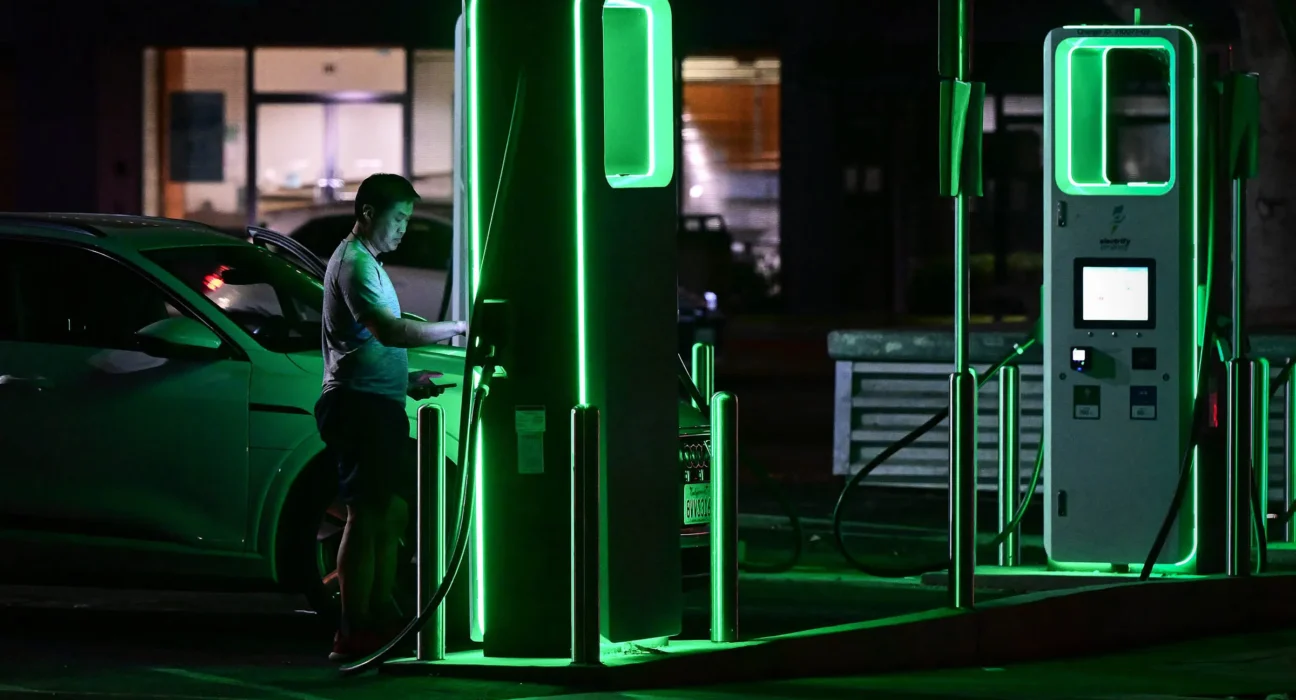Have you ever been stuck wondering where to charge your electric vehicle on a long trip? What if the growing network of EV charging stations could make those concerns a thing of the past? The rise of EV charging networks is transforming the way we drive, making electric vehicles (EVs) more accessible, convenient, and sustainable than ever before.
As the world embraces green driving solutions, EV charging infrastructure has become the backbone of this revolution. In 2025, these networks are not just about convenience—they’re about enabling a cleaner, greener planet. This article dives deep into the accessibility, advancements, and opportunities in EV charging stations, ensuring you’re fully equipped to join the EV revolution.
1. The EV Revolution: Why Charging Networks Matter
The Explosive Growth of EVs
- Mass Adoption: EVs are now more affordable and appealing due to falling battery costs and government incentives.
- Sustainability Goals: Countries worldwide are pushing for zero-emission vehicles to combat climate change.
Why Charging Infrastructure Is Crucial
Without a reliable network of EV charging stations, drivers face range anxiety—a significant barrier to EV adoption. The development of extensive, fast, and user-friendly charging networks ensures:
- Seamless long-distance travel.
- Greater EV adoption rates.
- Reduced dependency on fossil fuels.
2. EV Charging Stations in 2025: What’s New?
Accessibility and Expansion
In 2025, EV charging networks are more accessible than ever, with charging stations located at:
- Highways and rest stops.
- Shopping centers and workplaces.
- Residential neighborhoods.
Key Development: North America and Europe lead the way in public and private investment for charging infrastructure.
Fast Charging Technology
- Ultra-Fast Chargers: Recharge your EV in under 15 minutes.
- Wireless Charging: Cutting-edge technology eliminates the need for cables, offering effortless convenience.
Integration with Renewable Energy
Charging stations are now powered by solar and wind energy, aligning with global sustainability goals. This not only lowers operational costs but also ensures carbon neutrality.
3. Types of EV Charging Stations
1: Basic Charging
- Best For: Overnight charging at home.
- Speed: Adds about 2-5 miles of range per hour.
2: Standard Charging
- Best For: Residential and commercial use.
- Speed: Adds 10-20 miles of range per hour.
3: DC Fast Charging
- Best For: Public charging on long trips.
- Speed: Adds 60-80 miles of range in 20 minutes.
Key Insight: The rise of Level 3 chargers makes long-distance EV travel more practical than ever before.
4. How to Find EV Charging Stations
Mobile Apps for EV Drivers
Top apps like PlugShare, ChargePoint, and EVgo help drivers locate nearby charging stations, monitor availability, and compare prices.
Real-Time Data Integration
- Smart systems provide live updates on station availability.
- Navigation systems now include EV-specific routing to optimize charging stops.
Pro Tip: Use apps that integrate with your vehicle’s system for seamless operation.
5. Benefits of the Growing EV Charging Network
Convenience and Peace of Mind
- Access to a wide network eliminates range anxiety.
- Flexible charging options allow drivers to charge on the go.
Environmental Benefits
- Reduced carbon emissions.
- Enhanced energy efficiency with renewable-powered stations.
Economic Advantages
- Lower operational costs compared to gas-powered vehicles.
- Incentives for businesses to host charging stations, boosting local economies.
6. Challenges and Solutions in EV Charging Infrastructure
Current Challenges
- Uneven Coverage: Rural areas often lack adequate charging options.
- Cost of Installation: Setting up fast chargers can be expensive.
- Compatibility Issues: Not all EVs are compatible with all chargers.
Solutions on the Horizon
- Government Incentives: Subsidies for rural installations.
- Shared Charging Stations: Partnerships between businesses to reduce costs.
- Standardized Plugs: Ensuring compatibility across all EV brands.
7. The Costs: What to Expect
Home Charging Costs
Charging at home is the most cost-effective option, averaging $0.10-$0.20 per kWh.
Public Charging Costs
Public fast chargers typically cost $0.30-$0.50 per kWh. Some stations offer subscription plans for regular users.
Quick Tip: Many workplaces and shopping centers offer free charging to attract EV drivers.
8. How Governments Are Supporting EV Networks
Financial Incentives
- Tax credits for installing home charging stations.
- Grants for businesses to set up public chargers.
Legislative Support
- Mandates for charging infrastructure in new buildings.
- Policies encouraging renewable-powered charging networks.
9. The Future of EV Charging Networks
Expansion Goals
Governments and private companies aim to double the number of public charging stations by 2030.
Technological Innovations
- Vehicle-to-Grid (V2G): EVs can send unused power back to the grid, creating a two-way energy flow.
- AI-Powered Charging Stations: Smart systems that predict demand and optimize energy use.
Embrace the Green Revolution Today
Are you ready to drive into a greener future? The rise of EV charging networks in 2025 is paving the way for a sustainable, convenient, and cost-effective driving experience. Don’t let range anxiety hold you back—explore the growing network of EV charging stations and make the switch to electric today.
Visit our guide to learn more about finding the best EV charging options near you and taking advantage of government incentives.

